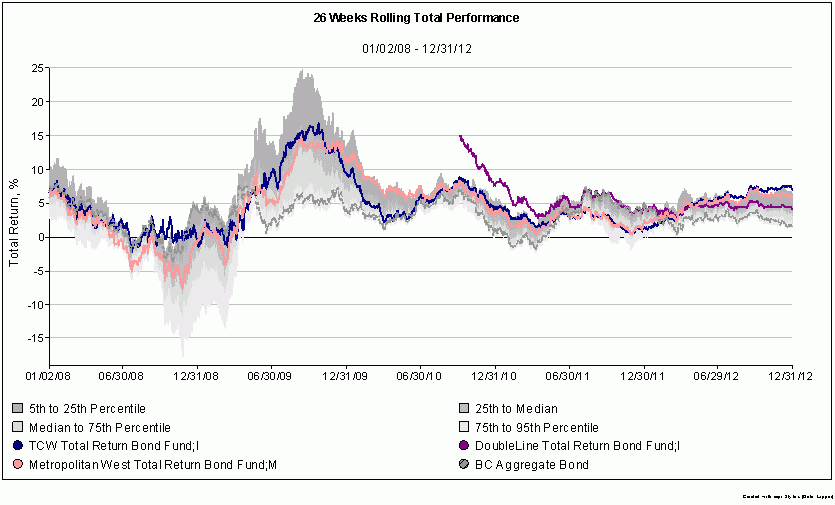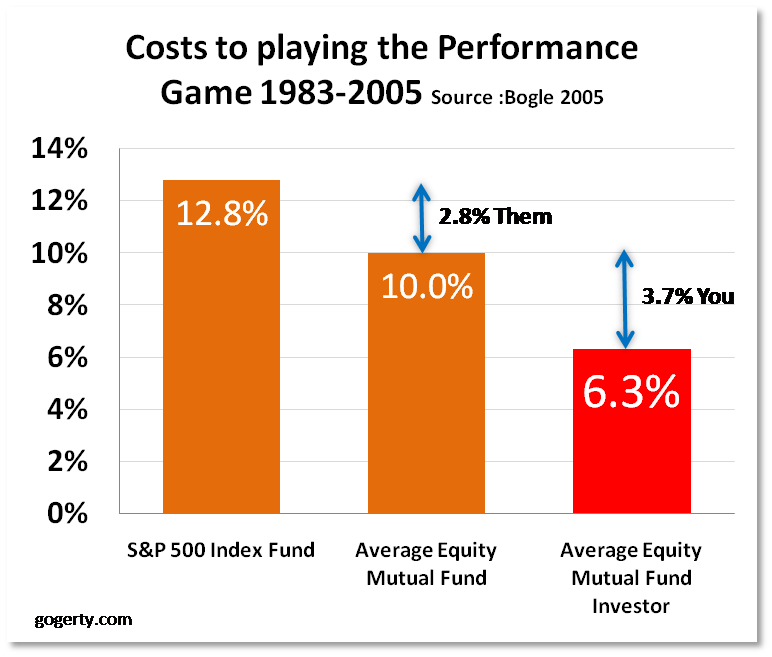Mutual Fund Returns
Post on: 10 Июнь, 2015 No Comment

Mutual Fund Returns
From Ranga Chand’s Getting Started with Mutual Funds
A return is a measurement of how much an investment has increased or decreased in value over any given time period. In particular, an annual return is the percentage by which it increased or decreased over any twelve-month period. Suppose you invest $1,000 today and twelve months later your investment is worth $1,070. The annual return on your original investment of $1,000 is 7%, or $70. The real return, however — the annual return less the rate of inflation over the investment period — will be lower.
Calculating a Fund’s Total Return
For those with a mathematical bent, figuring out the return on a mutual fund is not difficult. For the rest of us, a calculator comes in handy. Suppose the XYZ Fund has a net asset value (NAV) of $10 at the beginning of 1995. During the year, distributions of $2 per unit are made to investors. At the end of the year, the NAV is $13.50. To figure out the fund’s total return, you start with the year-end NAV of $13.50 and add on the distribution of $2.00. This gives you a total of $15.50. Next, subtract the original NAV of $10.00. That leaves you with $5.50, the fund’s profit for the year. Finally, divide the $5.50 by the starting NAV of $10.00, which gives you 0.55. To arrive at a percentage, simply multiply by 100. The total return for the XYZ Fund for 1995 was 55%.
(Final NAV + Distributions — Original NAV) / (Original NAV) X 100
How to Calculate Your Return
Let’s say you have invested $1,000 in a mutual fund and reinvested all distributions of $200. (If you received any distributions in cash, remember to include them.) At year’s end, your account is worth $1,200. To calculate your return, first subtract your initial investment of $1,000. Then take the difference of $200 and divide by your initial investment of $1,000. Multiply the answer, 0.2. by 100 to arrive at 20%.
= ($1200 — $1000) / ($1000) X 100
= ($200) / ($1000) X 100
= 0.20 X 100
These calculations can be used for any twelve-month period, or any other period.
When calculating your own return, keep in mind that any sales commissions or transaction costs (see Chapter 3) have to be deducted from the current value of your units and will therefore reduce your return.
Compound Average Annual Returns
Compounding means that on top of earning a return on your original investment, you also earn returns on your returns. The compound average annual return quoted in mutual fund brochures and advertisements shows the total a fund has returned, taking into account all capital gains (or losses) and dividends, expressed as an average yearly growth percentage.

For example, in its advertising, a certain fund quotes a three-year compound average annual return of 7.6%.
This does not necessarily mean the fund delivered this figure in any one of those three years. In fact, this particular fund delivered -8.8% for the year ending December 31, 1994, +21.6% for the year before, and +12.4% for 1992. Only if you had invested at the beginning of 1992, and reinvested all distributions, would your compound average annual return for the three years have been 7.6%. If you had invested at any other time, your rate of return might have been higher or lower.
The compound average annual return is an important measurement, as it shows the rate at which wealth grows over time. This is something that you, as an investor, clearly need to know.
A Final Word
Returns on any fund will reflect the particular market it invests in. For example, you cannot realistically expect an equity fund to deliver a return of 25% if the stock market is down 10%. Moreover, even if a fund shows a positive return, you might not; it may take you some time to recoup any transaction costs.
Key Points to Remember
- Returns show how your investment has increased or decreased in value.
- Compounding earns returns on your returns.
- Compound average annual returns show how wealth grows over time.
- Transaction costs reduce returns.














